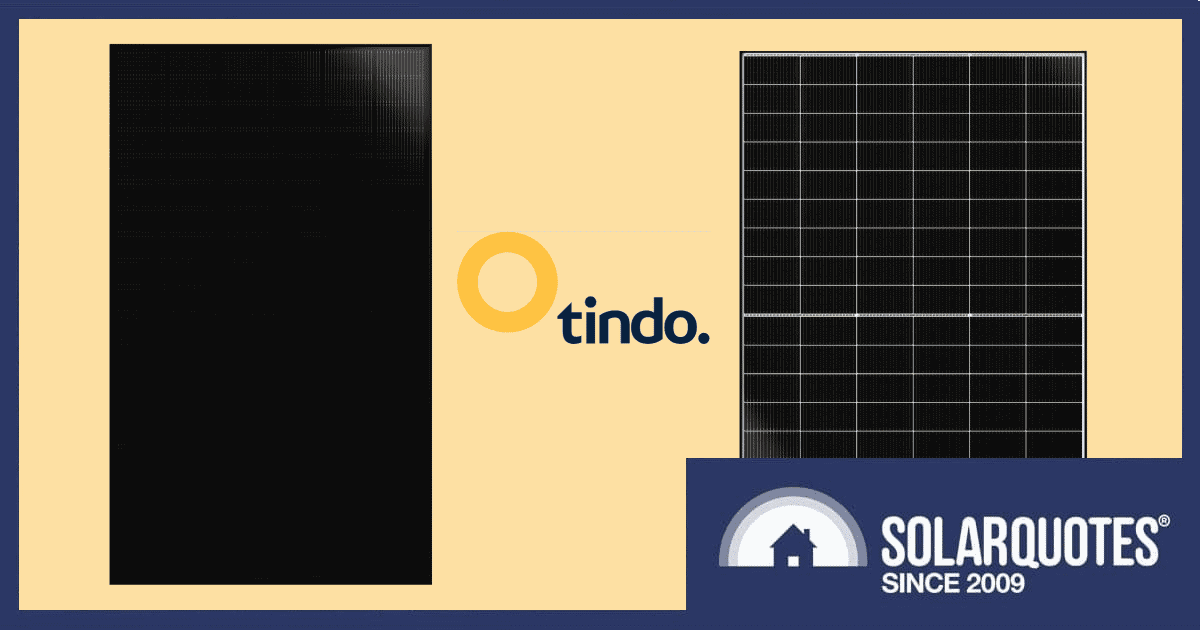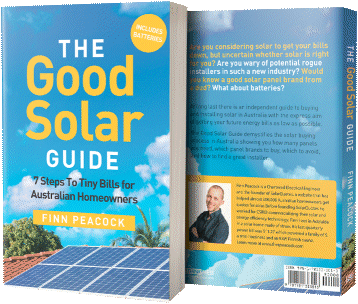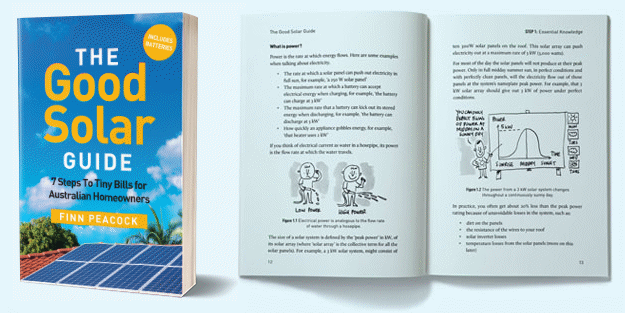
The 9th-generation solar panel series manufactured by Tindo at its facility in South Australia — the Walara G4P for rooftops — has been unveiled; and we learn what the word ‘Walara” means.
How Powerful Is Tindo’s Walara G4P?
Walara G4P N-type solar panels are available right now in 440 Watts capacity, but a 475 W all-black “seamless” module will be available in September 2025.
Tindo Walara-440G4P Specifications
- Capacity: 440 Watts
- Cells: 108 half-cut
- Cell Type: TOPCon N-Type Cells
- Panel Dimension: 1722 x 1133 x 35 mm
- Panel Weight: 21.0 kg
- Module Efficiency: 22.6%
- Temperature Coefficient of Pmax: –0.30 %/°C
- Full datasheet
The 440-Watt Walara supersedes the 425-Watt version, which had the same dimensions. But it weighed in at 22 kilograms (heavier), had a module conversion efficiency of 21.8% (less efficient) and a temperature coefficient of Pmax of –0.32%/°C (higher); the latter meaning the G4P should perform slightly better in the heat.
Tindo Walara 475W G4P-BL Specifications
- All-black
- Capacity: 475 Watts
- Cells: 120 half-cut
- Cell Type: TOPCon N-Type Cells
- Panel Dimension: 1910 x 1133 x 35 mm
- Panel Weight: 23.5 kg
- Module Efficiency: 21.9%
- Temperature Coefficient of Pmax: –0.30 %/°C
- Full datasheet
At 2.16 m2, the 475W G4P-BL is bigger than what we’d generally consider a residential rooftop solar panel (2 m2 maximum). No doubt there will be some wailing, gnashing of teeth and rending of garments among solar installers who have been wrestling with increasing panel sizes over the years. A rooftop isn’t the safest place at the best of times and add to that a bit of breeze, getting large panels onto a rooftop and into position can be quite a challenge.
Warranties And Testing
Tindo says the new Walara solar panels undergo its seven-point quality control process that the firm states produces a failure rate of 1 in every 200,000, “which is around 200-times better than the industry average”.
As for warranty, both have a 25-year product warranty and a 25-year performance warranty, with a minimum 87.4% of nameplate rating guaranteed at year 25.
The solar panels have been independently tested for hail, damp heat and have an operating temperature range of -40˚ to 85˚ Celsius, plus they’ve been cyclone tested by the Northern Territory’s Structural Engineering Consultants Australia (SECA) Pty Ltd.
Pricing for the Walara G4P isn’t clear, but generally Tindo gear is towards the upper end of the pricing spectrum among solar panel brands SolarQuotes currently recommends. Still, based on Tindo solar panel reviews here on SolarQuotes, some are happy to pay the premium for a good quality Australian-made1 product. And given the company is still Australia’s only solar panel manufacturer in terms of having products on the market, it’s a good thing they are.
On a related note, the Walara 475-Watt G4P isn’t the only new solar panel that’s big on power we’ve mentioned this week. Winaico’s WST-BDX54-B2 WBC Series (which is smaller and bifacial) is a back contact module that should soon be available in Australia in 475-Watt capacity (front-face), followed by a 480-Watt model.
So, What Does ‘Walara’ Mean?
Tindo Chief Executive Officer, Richard Petterson explains:
“In Kaurna Warra, the language of the Adelaide Plains traditional owners, Walara means ‘intelligent’, ‘smart’ and ‘bright’. That’s what we set out to design and manufacture, and I’m proud of what the Tindo team has achieved.”
And as for the company’s name, it’s also a Kaurna Warra word, meaning ‘sun’.
Other Tindo Tidbits
In other recent Tindo-related news, earlier this month the Australian Renewable Energy Agency (ARENA) awarded $34.5 million in new Solar Sunshot funding to the firm to assist it scale up its Adelaide-based production from 20 MW to 180 MW of solar panels a year, and to expand its product range.
This followed Tindo inking a deal to supply more than 52,000 panels to Queensland’s Bowen Water Pipeline project, securing a $8.4 million deal to export 15MW of its modules to Vietnam and teaming up with the University of New South Wales to explore TOPCon solar cell technology.
Footnotes
- Tindo manufactures its solar panels using imported cells. ↩

 RSS - Posts
RSS - Posts



It is excellent to see Australia’s only solar PV manufacturer Tindo progressing so well with their new Walara range of solar panels, and both the other “good news stories” mentioned here, of ARENA funding & the awarding of big supply contracts.
BUT it would also be great if their solar panels were more widely available to the residential market installers in states other than SA / Adelaide
How ’bout it Tindo? Some of us dedicated Australians are prepared to pay extra for top quality Australian Made products if at all possible.
I will need to upgrade my now 13 yr old hybrid 4.4kw Bosch / Selectronic system soon now that the Sonneschein VRLA batteries are at EOL, but being in NE Vic I cannot find anyone retailing Tindo panels locally.
I now also have a small EV to charge.
I wrote to Tindo recently to inquire if any retailers or installers in Victoria sell their solar panels. I am yet to receive a reply, which is very disappointing as I would like to support Australian Made solar!!.
Any idea of prices?